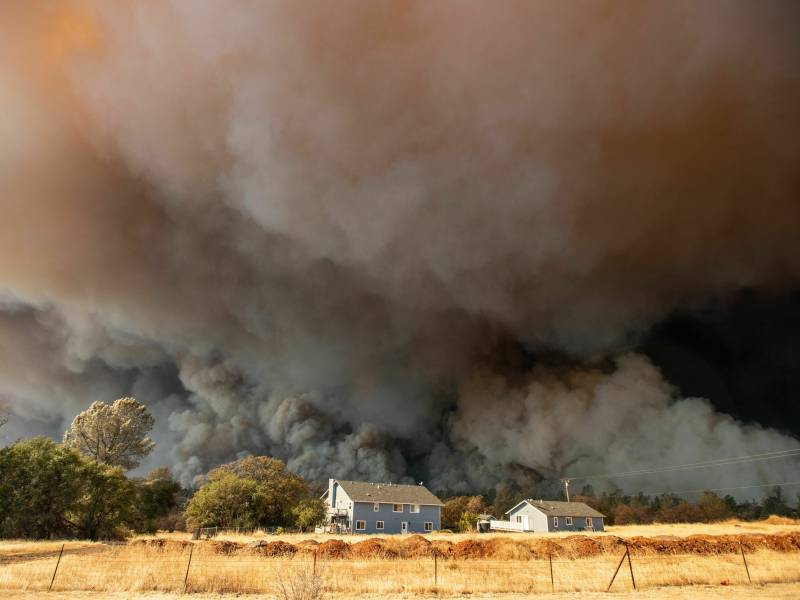“It’s kind of like if you’re wondering if growing a couple inches will help you dunk,” Brown explains. If you’re really tall already, he says, a few extra inches won’t make a big difference. But if you’re 5′ 10″, a little boost could get you over the rim. “We see the same thing with wildfires. If you’re right on the precipice of these thresholds, then warming causes them to cross over that threshold and increase the risk of danger,” he says.
The atmosphere is a thirstier sponge
The thresholds were primarily associated with the vapor pressure deficit, a fancy term for how air pulls water out of dead or live plants and other burnable materials. Hotter air –one of the hallmarks of human-caused climate change–sucks moisture more strongly out of those pieces of potential tinder. Years of prior research has shown that fires can grow much bigger and more intense when they have plenty of dry, crispy fuel to burn, a factor heavily influenced by big vapor pressure deficits.
The new research substantiates those earlier findings, showing fires to be nearly five times likely to burn explosively if those thresholds were crossed. But when the weather was already extremely hot and dry, or by contrast very moist, climate change’s extra nudge didn’t make as big a difference to fire behavior.
As much influence as a heated-up atmosphere can have, it’s far from the only factor at play. “Explosive growth of fires is almost always in some way correlated with high winds,” which whips small fires into enormous ones, points out Max Moritz, a fire expert at the University of California, Santa Barbara, who wasn’t involved in the study.
Where fires start, and how, affects their behavior as well. Fires act differently in forests than in grass or shrublands, or in areas full of houses. “The things we need to continue to keep in mind are the factors alongside climate that are equally if not more important: how is the land use going to change, and how is vegetation going to change?,” says Alexandra Syphard, a fire scientist with the Corvallis, Oregon-based nonprofit Conservation Biology Institute.
The researchers trained a machine learning model on California’s 18,000 fires over the past two decades and the weather conditions under which they burned so that the model could pick out the weather factors that influence fire behavior. Using climate models, they simulated that same world, but minus human-caused climate change. Then they compared fire behavior in the simulated, un-warmed world with the real, overheated one.
Controlling risks for the future
Risks of explosively growing fires are almost certainly going up, the research found, even if global emissions are reduced quickly and decisively. Global temperatures will continue to rise even after emissions slow or stop, continuing to push fires into more dangerous territory. The number of fast-growing fires could almost double by the end of the century, the researchers found.
But, says Brown, those climate-driven increases in risk can be nearly — or entirely — offset by smarter management of the non-climate parts of the fire story. Clearing extra fuel from overcrowded forests via strategies like prescribed fire, for example, means there’s less fuel to burn. More than 80% of U.S. fires are started by people, and those fires burn faster and wider than naturally ignited ones. Getting that number in check could greatly lessen risks.
To Mortiz, the challenge now is partly about considering climate’s influence on wildfire risk while figuring out how to minimize the risks of fire for people and their homes and communities.
His research group has looked at how human-scale decisions, like neighborhood design or house placement, affects wildfire risks to communities. “We realized the strength of housing densities on fire activity rivals the strength of climate variables in some parts of California,” he says. Those choices are well within peoples’ ability to control, through zoning policy, or building codes, or fire-smart neighborhood design. “We have to be more holistic in our understanding of ‘risk,’ to look at the human side as well,” Mortiz says.
Copyright 2023 NPR. To see more, visit https://www.npr.org.
9(MDAxOTAwOTE4MDEyMTkxMDAzNjczZDljZA004))

9(MDAxOTAwOTE4MDEyMTkxMDAzNjczZDljZA004))